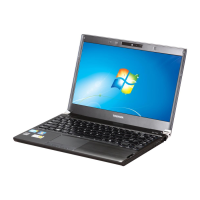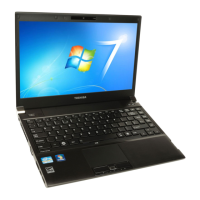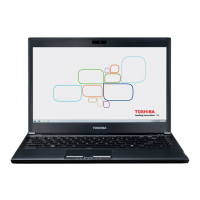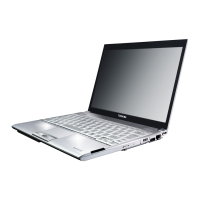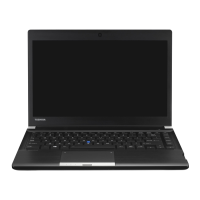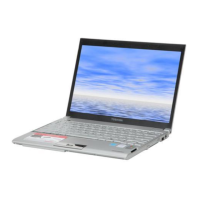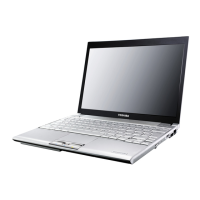
Do you have a question about the Toshiba Portege R700 and is the answer not in the manual?
| Display Size | 13.3 inches |
|---|---|
| Resolution | 1366 x 768 |
| Graphics | Intel HD Graphics |
| Operating System | Windows 7 Professional |
| RAM | 4GB DDR3 |
| Storage | 320GB HDD |
| Weight | 3.2 lbs |
| Battery Life | Up to 8 hours |
| Wireless | 802.11b/g/n |
| Ports | 3 x USB 2.0, VGA, HDMI, Ethernet, headphone/microphone combo jack |
| Optical Drive | DVD SuperMulti drive |
Verifies all necessary hardware components are present before setup.
Instructions for connecting the AC power adapter for charging and operation.
Guidance on how to safely open the computer's display panel.
Steps to power on the computer for the first time.
Details on using the system recovery feature to repair the computer.
Overview of the computer's front components when the display is closed.
Identifies ports and features on the computer's left side.
Identifies ports and features on the computer's right side.
Details the ports and connections on the computer's back.
Identifies components and features on the computer's underside.
Overview of the computer's front components with the display open.
Explains the meaning of the computer's LED system indicators.
Details on CPU and system memory configurations.
Describes battery types, AC adaptor, and RTC battery.
Information on hard disk drives and solid-state drives.
Details on the display panel and power saving technology.
Information on LAN, Bluetooth, and Wireless LAN.
Highlights unique or advanced features for convenience.
Details on installing and using optional devices like PC Cards and ExpressCards.
Guide to operating the computer's touch pad for navigation.
Instructions for setting up and using the fingerprint sensor for authentication.
How to load, remove, and use CD/DVD drives.
Steps and precautions for writing data to CDs and DVDs.
Information on wireless LAN and Bluetooth functionality.
Instructions for connecting to a wired local area network.
Precautions for safely handling and cleaning the computer.
Details on the HDD protection feature to prevent damage from shocks.
Describes the basic alphabetic, numeric, and symbol keys.
Explains the dedicated function keys at the top of the keyboard.
Details how to use the FN key with other keys for special functions.
Lists keyboard shortcuts for quick access to system functions.
Instructions for using the integrated numeric keypad overlay.
Explains the different power states and indicator lights.
Details battery types, usage, and handling precautions.
Step-by-step guide on how to recharge the computer's battery.
Tips and factors affecting battery life and how to extend it.
Information on setting user and supervisor passwords for security.
Describes Shut Down, Hibernation, and Sleep modes.
Procedure to enter the computer's hardware setup utility (BIOS).
Settings for customizing the computer's display configuration.
Options for configuring the processor's operating mode.
How to set the order of devices for booting the computer.
Options to enable or disable specific devices or functions.
Guidelines for diagnosing and resolving computer issues.
Basic checks to perform before advanced troubleshooting.
Steps for diagnosing the root cause of computer issues.
Checks for common problems related to hardware and peripherals.
Troubleshooting steps for power-related issues.
Steps to diagnose and resolve battery problems.
Solutions for keyboard-related malfunctions.
Troubleshooting steps for hard disk drive issues.
Resolving issues with the touch pad or mouse.
Troubleshooting tips for the fingerprint sensor.
Steps to resolve issues with recovery media creation.
Details operating and non-operating environmental conditions.
Specifications for AC adapter and computer power.
Explains how the display controller interprets software commands.
Instructions for configuring display settings and resolving display issues.
Details technical specifications of the Wireless LAN card.
Information on radio frequency bands and regulations.
Guidance on Bluetooth compatibility and potential interference.
Compliance information for Bluetooth wireless technology.
Lists safety and compliance certifications by country.
Procedure to launch the PC Health Monitor application.
Guidance on responding to messages from the PC Health Monitor.
Notes on CPU performance variations under different conditions.
Factors affecting battery life and its natural degradation.
Information on the USB Sleep and Charge function.
